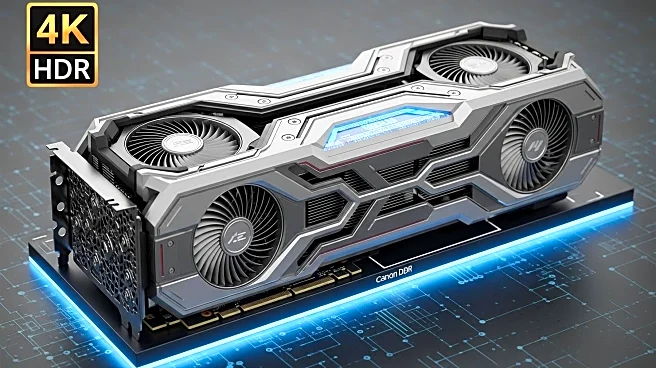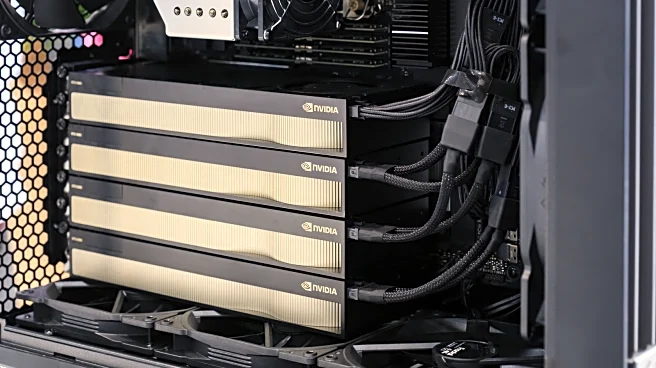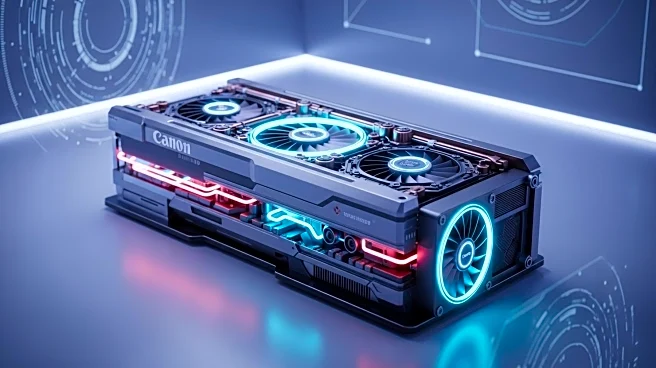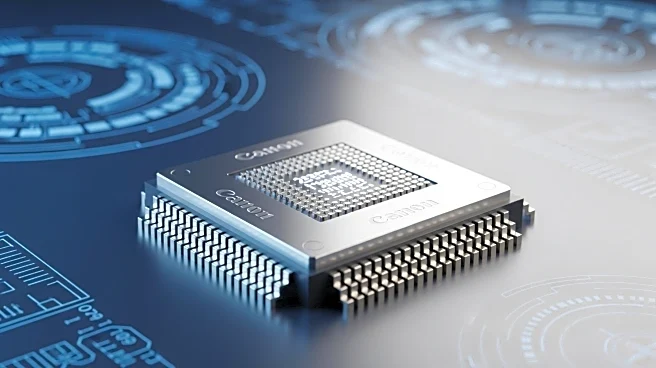What's Happening?
AMD is set to launch its next-generation RDNA 5 'Radeon' gaming GPUs, which are rumored to feature a significant increase in core count. The flagship configuration is expected to pack over 12,000 cores, with 128 cores per compute unit. This marks a substantial upgrade from the RDNA 4 GPUs, which had 64 cores per compute unit. The RDNA 5 lineup will include four GPU die configurations, ranging from a top-tier die with 96 compute units to an entry-level die with 12 compute units. This development is anticipated to enhance AMD's competitiveness in the gaming GPU market, particularly against NVIDIA's offerings.
Why It's Important?
The introduction of RDNA 5 GPUs represents a major leap in AMD's graphics technology, potentially closing the performance gap with NVIDIA's RTX series. This advancement could bolster AMD's position in the high-end gaming segment, offering improved performance in areas such as ray tracing and artificial intelligence. The increased core count and compute unit configuration may lead to better gaming experiences and more efficient processing capabilities, benefiting gamers and developers alike. As AMD aims to regain its competitive edge, this move could influence market dynamics and consumer choices in the gaming industry.
What's Next?
AMD is expected to continue refining its RDNA 5 architecture, with potential improvements in performance and features. The company may focus on optimizing its GPUs for better ray tracing and AI capabilities, aiming to match or surpass NVIDIA's offerings. As the RDNA 5 GPUs are rolled out, AMD's strategy in the gaming market will likely involve aggressive positioning and marketing to attract high-end users. The success of these GPUs could lead to further innovations and expansions in AMD's product lineup, impacting future developments in gaming technology.
Beyond the Headlines
The RDNA 5 GPUs could have broader implications beyond gaming, potentially influencing advancements in other areas such as virtual reality and professional graphics applications. The increased processing power may enable more complex simulations and visualizations, contributing to developments in fields like scientific research and digital content creation. Additionally, AMD's focus on enhancing its GPU technology could drive competition in the semiconductor industry, prompting other companies to innovate and improve their offerings.












